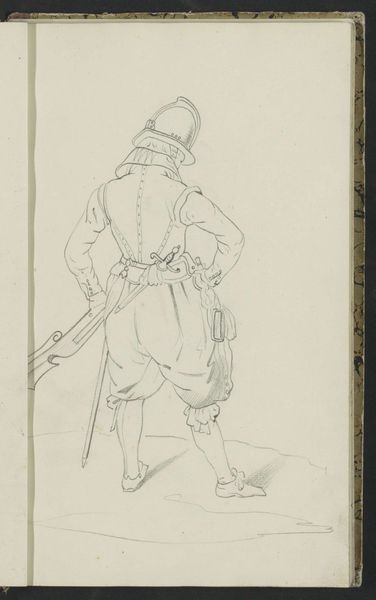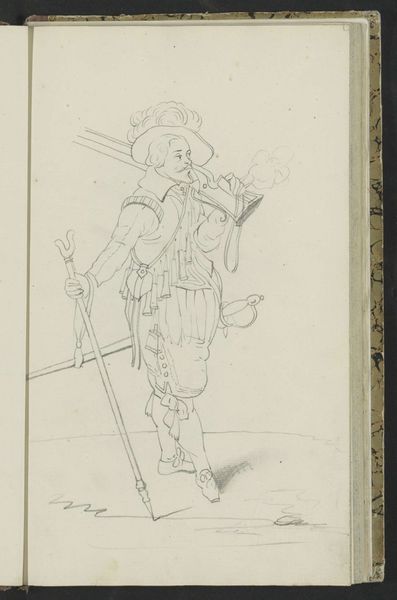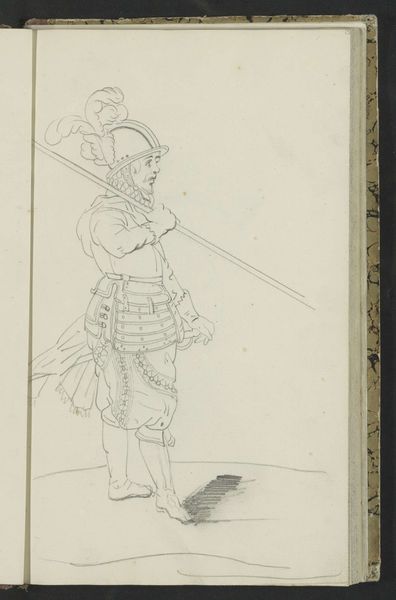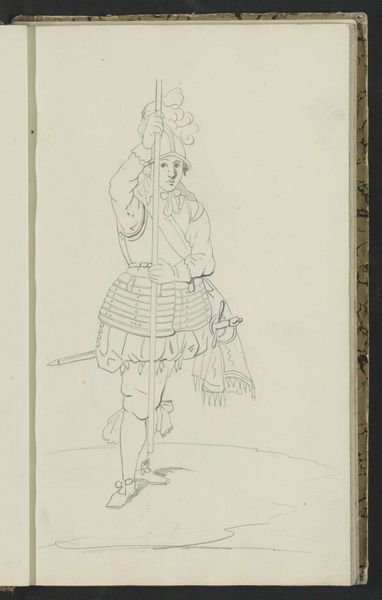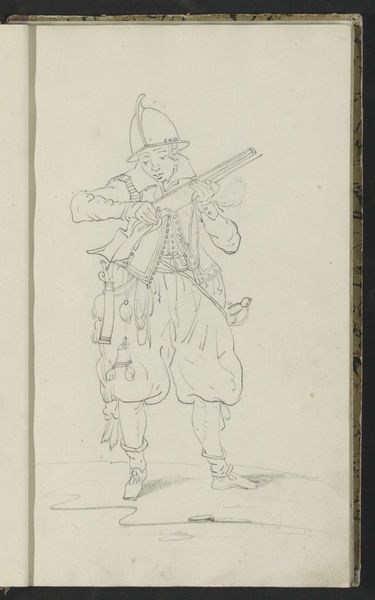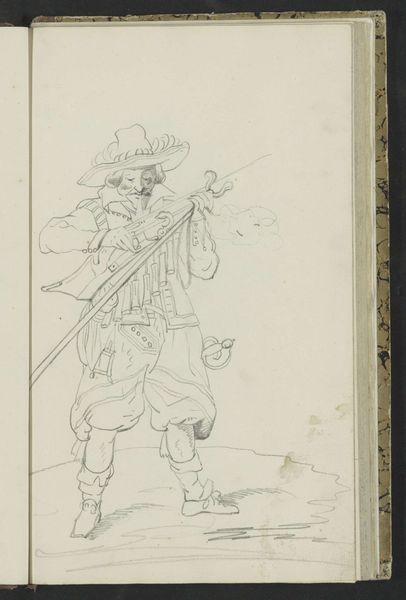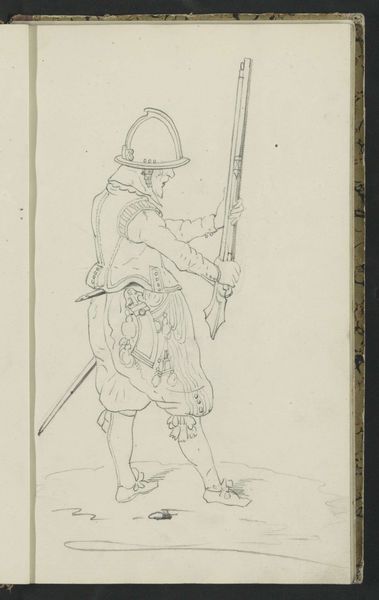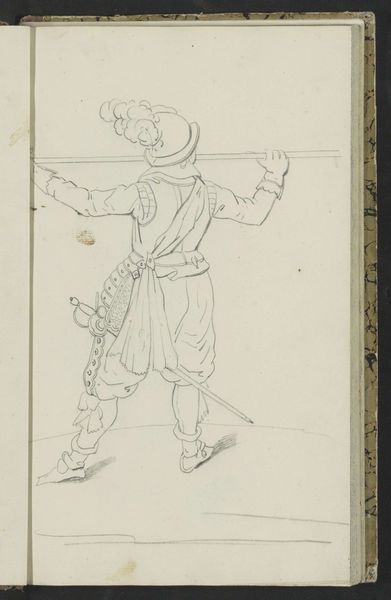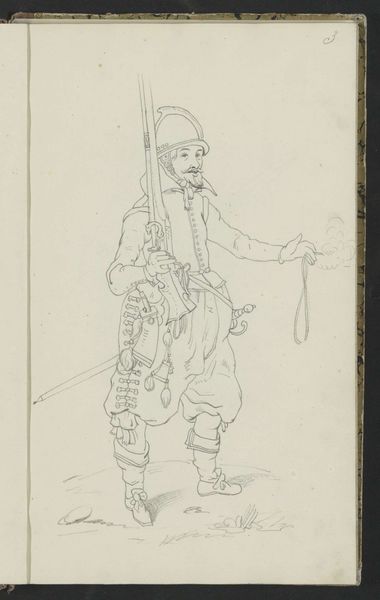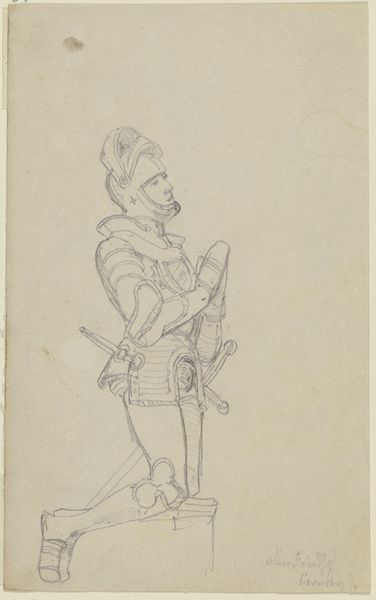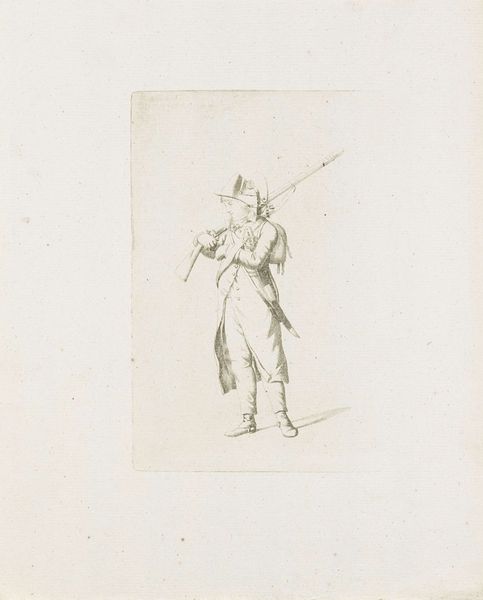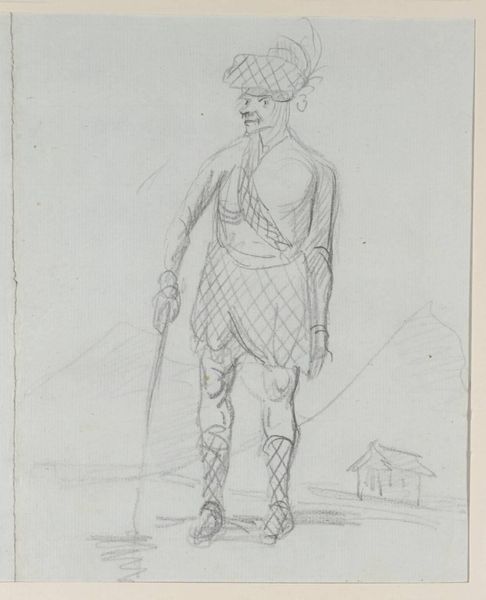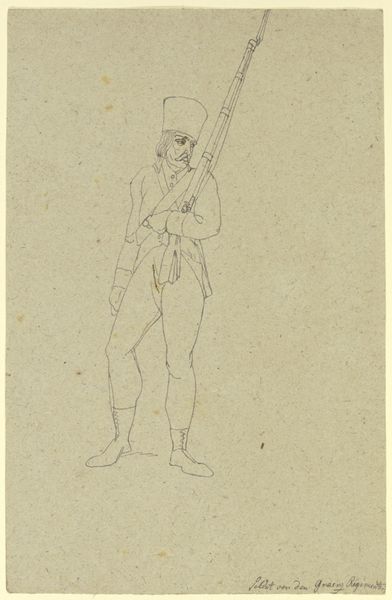
Soldaat die zijn spies in de rechterhand en musket in de linkerhand draagt c. 1826 - 1888
0:00
0:00
drawing, pencil
#
portrait
#
drawing
#
imaginative character sketch
#
quirky sketch
#
pen sketch
#
cartoon sketch
#
personal sketchbook
#
ink drawing experimentation
#
pen-ink sketch
#
pencil
#
sketchbook drawing
#
watercolour illustration
#
history-painting
#
academic-art
#
sketchbook art
Copyright: Rijks Museum: Open Domain
Editor: So, this intriguing pencil drawing, “Soldaat die zijn spies in de rechterhand en musket in de linkerhand draagt” by Johannes Antonius Canta, is dated circa 1826-1888. It strikes me as a somewhat idealized portrait of a soldier, almost theatrical in its presentation. How do you interpret this work, especially considering its historical context? Curator: This piece really highlights the role of the military figure in shaping national identity and public perception during that era. Consider the period: The Netherlands was navigating its post-Napoleonic identity. Images of soldiers served as potent symbols of strength and order. Do you notice how the artist seems less concerned with accurately depicting military life and more with creating a visual symbol? Editor: I see what you mean. The theatrical presentation, as I called it, seems almost intentional now. It’s less a study of an actual soldier, and more an emblem of the military. But who was this intended for, do you think? Curator: That's an important question. Given the medium, it's likely this wasn't intended for mass consumption, like a print. This could be a preparatory sketch, maybe intended for a more formal painted portrait destined for a civic building. Or perhaps a private commission, demonstrating allegiance or social aspiration. Notice the meticulous details of his garb. Editor: So, the artistic choice to emphasize idealized features is less about realistic representation and more about projecting power and national pride. I'm now thinking about this in the context of what purpose military art served at the time. Thanks for this different way to appreciate Canta’s intention! Curator: Absolutely! Looking beyond the surface image into how art interacts with and reinforces societal narratives really opens new ways to understand its lasting significance. It certainly helps decode visual codes of power, and perhaps challenge our contemporary readings, too!
Comments
No comments
Be the first to comment and join the conversation on the ultimate creative platform.
